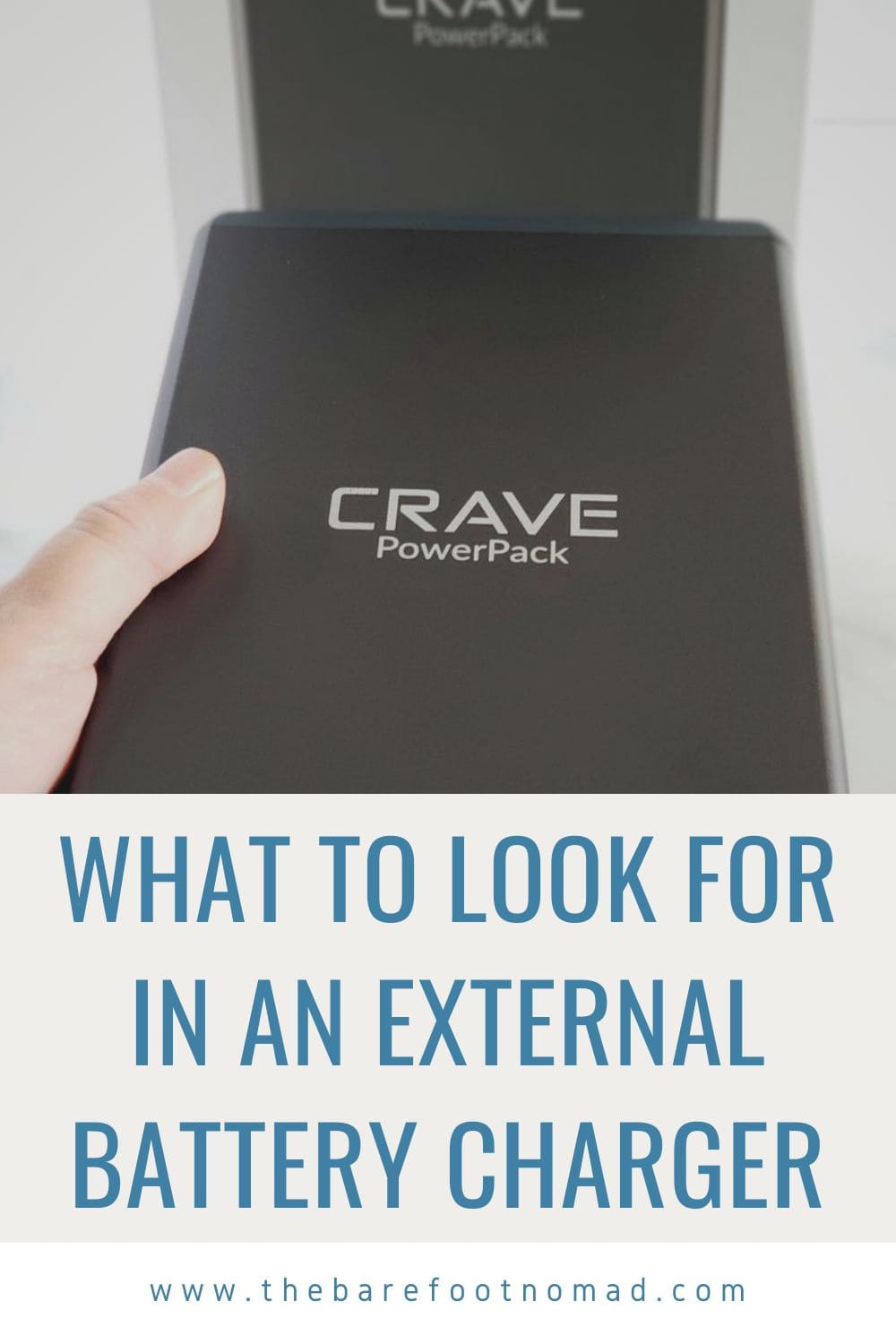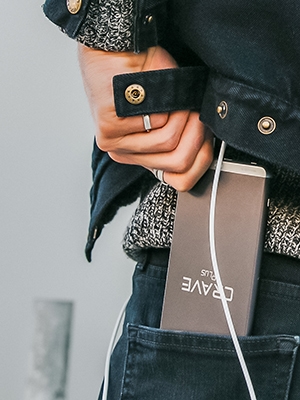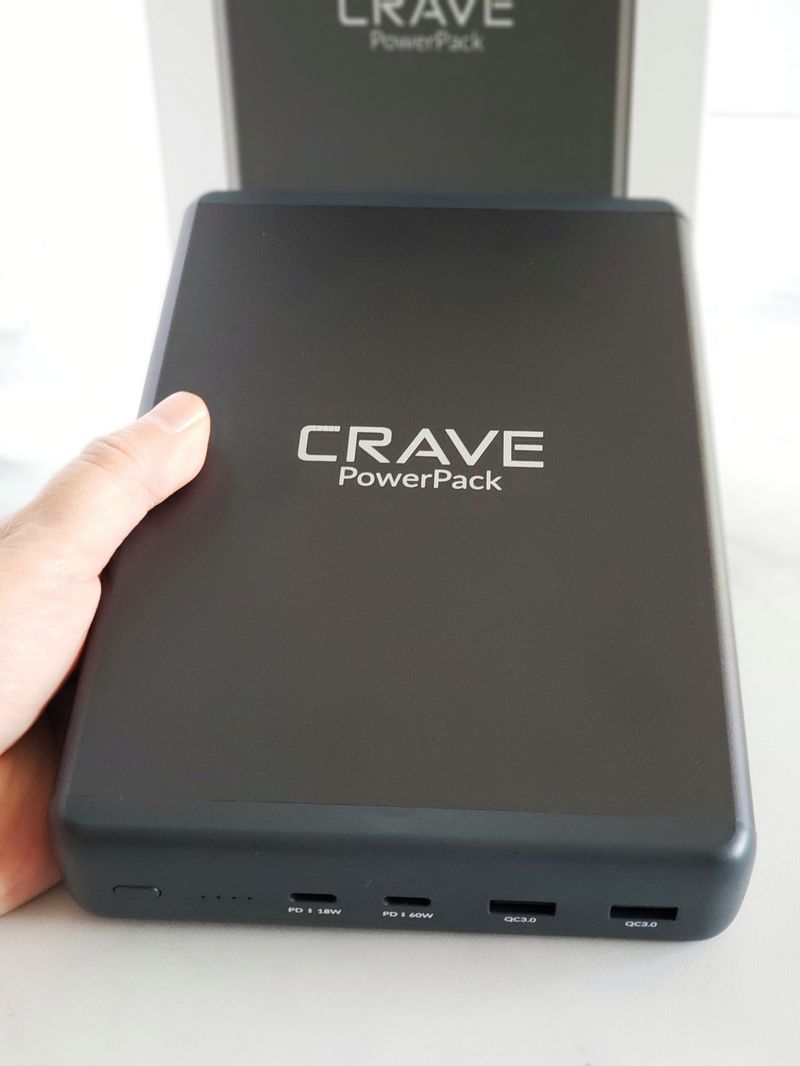
Ever been somewhere with your phone or laptop on the verge of dying, panicking as the last few percent ticked away?
Of course you have; we’ve all been there. Running out of power at crucial times is never easy, whether on an important phone call, in the middle of booking a place to stay that night, or even catching those last few minutes of a game or your favorite TV show.
We’ve used portable chargers, also known as battery packs or external batteries, ever since we’ve carried our first iPhone all those years ago. These days, we never go on a trip without grabbing at least a few external battery chargers.
In this article, we review our newest acquisition, the powerful Crave PowerPack 2 external battery charger, and talk about what to look for when buying an external battery pack.
So, tired of constantly searching for a place to plug in your smartphone, your tablet, and even your laptop? Well then, let’s delve into the world of portable chargers.
Use code TBN10 to get 10% off a portable charger at Crave Direct.
See Crave Portable Chargers on Amazon.
What to look for when buying an external battery charger
For a simple device, an external battery charger can have a surprising amount of technical info that makes choosing one confusing.
So, what’s the most important thing when getting a battery charger? Some say portability however, for most people, the amount of charges it gives is just as important.
When you look at external battery chargers, the first thing you’ll notice is how many mAh they’re rated for.
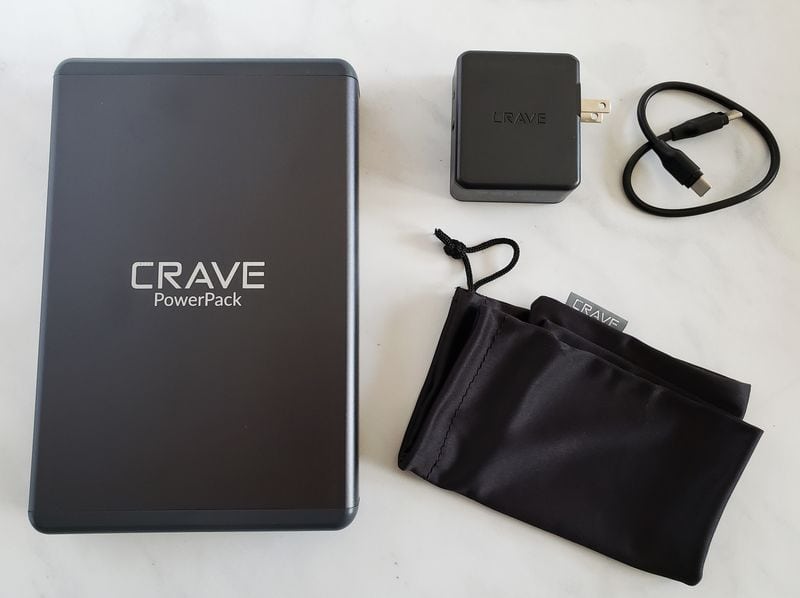
What does mAh stand for?
A mAh stands for Milliamp Hours. It’s basically a measurement of how much charge the battery can put out over an hour.
To give you an idea, a small lipstick sized charger usually has about 2,000 to 3,000 mAh, a standard deck of cards sized charger has around 10,000 to 15,000 mAh, while a monster family-sized external battery charger can have up to 50,000 mAh.
I like to think of mAh in terms of the number of smartphone recharges you can get. A little 3,000 mAh battery can almost completely recharge my current phone a single time, while a family sized 50,000 mAh charger can recharge my phone 15 times.
Of course, the amount of charges you get will depend on your phone or tablet size and you will lose a small percentage (up to 15%) in the transfer from a portable charger.
How many ports does a portable charger need?
When choosing an external battery pack, it’s important to know which charging ports are included. The number of ports (usually USB ports type A or C) determines how many devices can be charged at once. If you have a phone and tablet for instance, having 2 ports can be really handy. Multiple ports also helps when you have a partner or family using it as well.
Once you’ve decided home many mAh you need, and how many ports you want, then there’s size and weight to consider. Most battery packs have a similar size to power to weight ratio so if the battery pack you’re looking at seems vastly different, it could be a cause for alarm.
Built in LEDs and accessories
As well as dimensions, portable chargers can include built in accessories like LED flashlights or hanging hooks and then there are also carrying cases to consider. These aren’t deal breakers for most people, however they could tip the scales when comparing two similar models.
A typical battery charger should also have a LED display that shows its charge level. Some battery chargers will show you a few lines, while some can tell you a percentage. Most are just estimates, so always take these readings with a grain of salt.
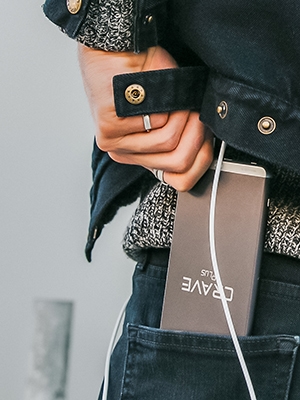
Portable charger sizes and weights
As well as capacity, the size and weight of a charger is a huge consideration for most people. The smallest lipstick style chargers weigh virtually nothing at around two ounces. The largest 50,000 mAh chargers weigh around three pounds, and are around eight inches long, two inches wide, and five inches wide.
Not only is it wise to choose a powerful enough battery charger, you also need to purchase one that will fit your lifestyle. If all you need is a quick top up from time to time and you like to travel light, then a lipstick size charger might be fine for you. However, if you’re a work from the road kind of person, then a heavier duty charger that can top up your laptop and phone multiple times might be more appropriate.
The same applies if you love to stream video or play a lot of video games on the go. Both can eat up your batteries much quicker than simple browsing, talking or texting. If you’re having to charge your devices several times in one day then you definitely need a bigger charger.
People often find that the best charger for them is the one they’re most likely to carry with them regularly. Too big might slow you down but too small might leave you searching for another answer. You might also find that having one that’s more powerful as well as a lighter one works best for you depending on the day.
External charger USB port options
While portable battery chargers come in all shapes and sizes, older battery packs typically have standard USB-A ports for outputs and a micro USB port for input or to charge the battery pack. These work fine for older devices, but thankfully a lot of newer chargers come with the USB-C standard.
USB-C is easier to plug in (it doesn’t care which direction it goes in and can often be used for both an input and an output port), and generally has the advantage of letting you charge faster (though not always). Of course, if you have older devices that still use USB-A, it might be better to get a charger with that style output.
Note: Apple’s Lightning cords can have either USB-A or USB-C opposite ends, depending on the phone or tablet model you own, so you can go either way. Also note, you can get cables or adapters that work with either style charger port, so don’t fret if the model you like the best isn’t the perfect match to your current phone or tablet.
One thing we will note is that if you get one of the newer chargers that uses USB-C, it’s not a bad idea to make sure you find one with both USB-C input and output so you can use the same cable for both charging your device and for recharging the battery charger.
Fast charging options for battery chargers
For fast charging, you need a device that accepts fast charging, a cable that allows fast charging, and an external battery pack that provides fast charging.
So, what is fast charging? To understand that, you first need to understand what regular charging means. Most phone chargers are based on USB specs. Traditional USB 2.0 specs meant 5 volts and 500 milliAmps power, but then USB 3.0 came out and boosted that to 5 volts and 1 amp.
Fast charging means that not only is the power boosted from 5V to 9V (or even 12V). but the amperage can be boosted up to 2 amps and sometimes even over 3 amps. What this means is that if your device is plugged into one of these super chargers and your phone supports it, you can charge your device way faster than you used to.
Now, there are a dozen different companies that support a bunch of different protocols, so how do you know which one works best for your device? Well, your best bet is to research your own device and see what it supports.
QC3 or Qualcomm Quick Charge 3.0 is the most common newer protocol when it comes to fast charging, which often works across multiple brands like Samsung, Motorola and LG devices. Apple uses USB Power Delivery for fast charging. This means an 18W adapter with a USB-C to Lightning cable.
The good news is that most chargers should work with nearly every brand out there. Most will output at the default 5V/500ma power unless there’s a chip in your device that tells it that it can support higher speeds. While you’re not guaranteed to get the fastest charge without finding a compatible charger, the charger will nonetheless charge your device (albeit possibly slower than its max).
If you’re still unsure which works best with your own device, check out reviews of people using the same device as yours on the different chargers. Though not always 100% correct, they can often tell you if you’re covered.
Our Crave PowerPack Battery Charger Review
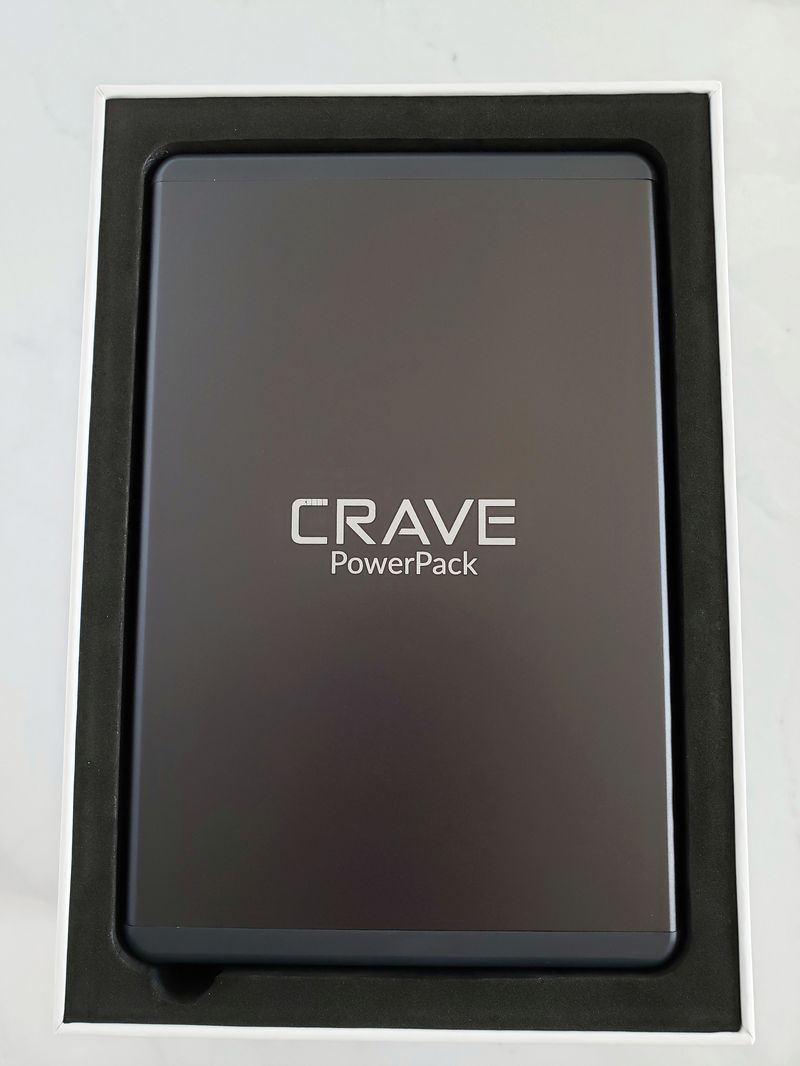
For years, our go-to charger for the family was a 20,000 mAh portable charger. It can charge two devices at once, and has high speed charging.
Since we’re a family of four, each with our own devices, we’ve found that we often need to carry at least two of these 20,000 mAh chargers to keep our phones charged on the go. It also seems like we’re constantly looking for an outlet to replenish our external battery chargers, which really seems to defeat the purpose of a portable charger.
Since our family of four often travels complete with laptops and gaming systems, it’s obvious we need a lot of battery power. Something with a lot of power is also great for our travel trailer to help keep the strain off our main batteries.
For us, it was time for an external battery charger that was powerful enough to manage topping up the charge on all our devices.
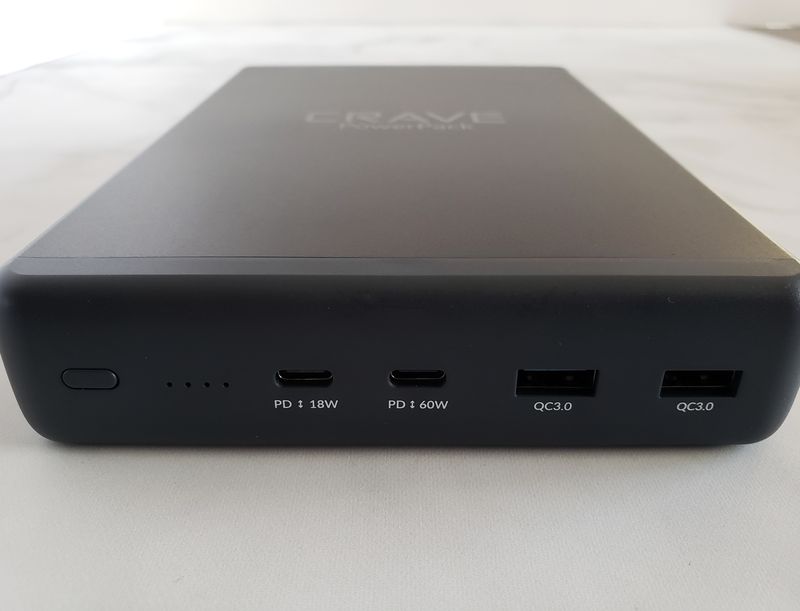
Time for something bigger, with more power.
Time for the Crave PowerPack 2.
The Crave PowerPack 2 is a beast. It’s a whopping 50,000 mAh, meaning that when it’s fully charged, it can charge a typical smartphone 15 times from 0% to 100%. It can even charge a tablet over a half dozen times.
Complete with two Quick Charge 3.0 ports (the most common charging style), charging our phones has never been so fast.
Use code TBN10 to get 10% off at Crave Direct.
See Crave Portable Chargers on Amazon.
As well as just about every small device in your house, you can use it to charge your laptop (as long as it has a type-C input for charging). Our current laptop still uses the old style charger, however we’re on the lookout for a new one so having the PowerPack with those ports ready will make our decision even easier.
Tip: Crave sells a multi-tip USB cable kit on Amazon that works with older laptops. Click here to check it out.
The trade off for all that charging power is that the Crave PowerPack 2 is quite a bit bigger and heavier than our current 20,000 mAh chargers. This isn’t a charger you can pop in your back pocket and carry around town. It’s made for heavier duty uses than that.
Honestly, though, now that we’re doing more road trips, and using our rolling luggage more, the weight of the PowerPack 2 isn’t a problem.
Travel restrictions have definitely changed our style of travel. We used to travel with gear that was as lightweight as possible to make our airplane carry-ons as light as possible for our family. That said, we haven’t taken a flight since the pandemic started, electing to do more road trips and camping.
Now that we’re spending a lot more time in our travel trailer or on road trips, we can carry a little more in our bags. Honestly, I’m really liking being able to be a bit more relaxed with our packing!
Use code TBN10 to get 10% off at Crave Direct.
If you want to see what Crave sells, and how their reviews look, pop on over to see the Crave products on Amazon.
More about Crave
While Crave is best known for their external battery chargers, that’s not all that they sell.
They also offer screen protectors, cables, cases (for Apple, Samsung, and Google), bluetooth speakers and earphones.
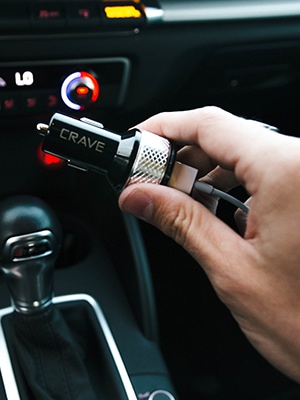
Use code TBN10 to get 10% off at Crave Direct.
See Crave Portable Chargers on Amazon.
